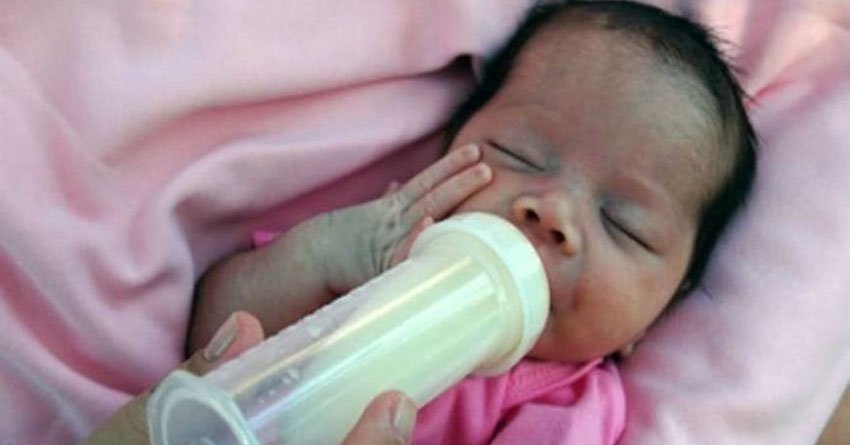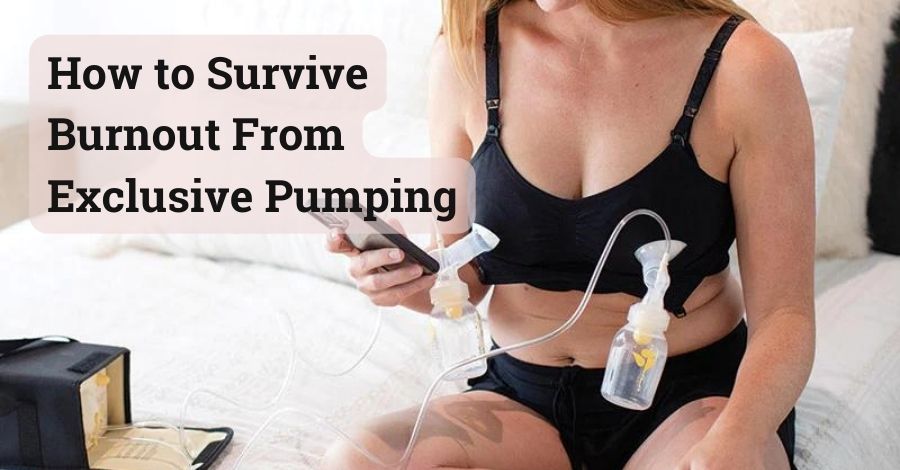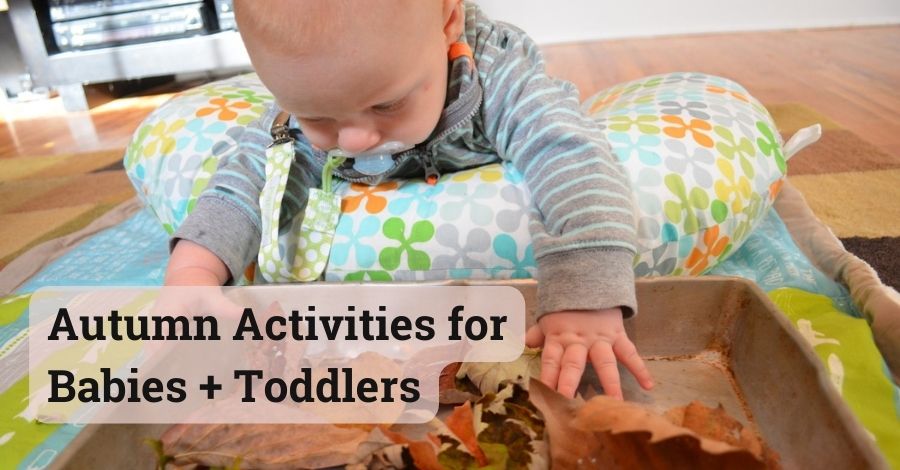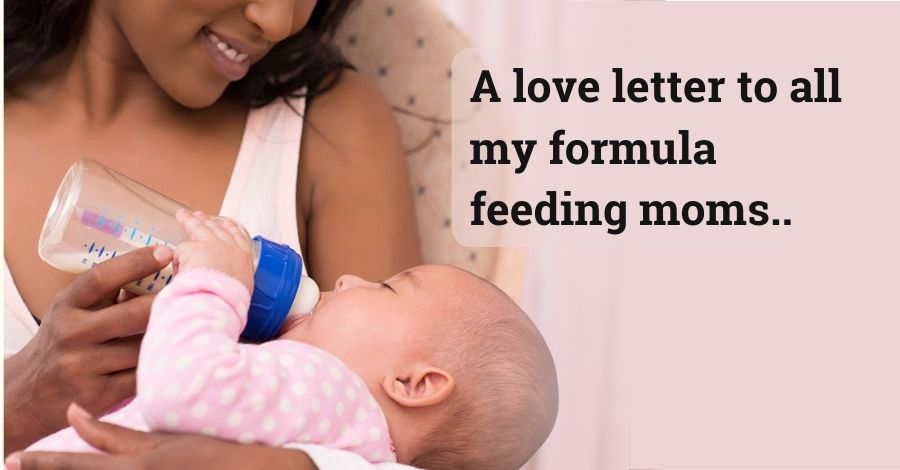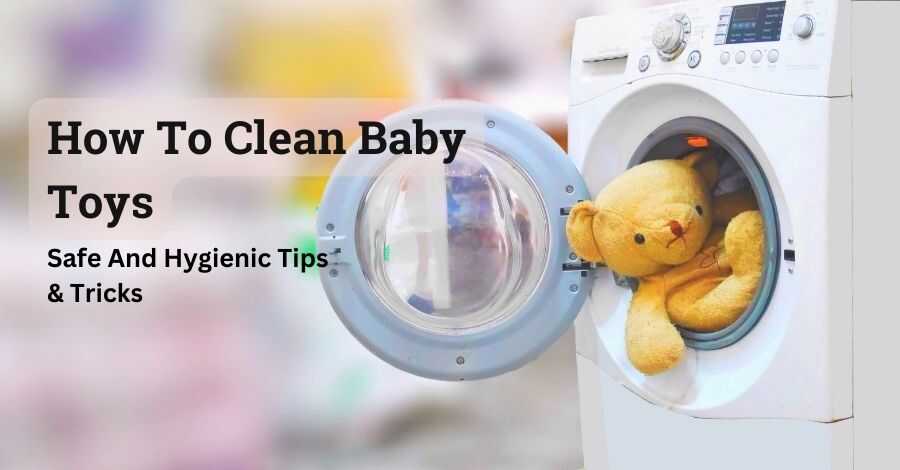
Hey mamas! Those little bundles of joy bring sunshine into our lives, but let’s be honest, they also manage to track in a surprising amount of mess. Oh, and let’s not forget about their favorite toys – those loyal buddies that go with them everywhere, from the playroom to the sandbox. (and sometimes even the occasional drool-fest!). Keeping our little ones safe and healthy means keeping their toys clean, too. But with so many different types of toys and cleaning products out there, it can feel overwhelming.
Don’t worry, mama, I’ve got your back! This guide will walk you through everything you need to know about motherhood, including how to clean baby toys, from understanding why it’s important to the best methods for specific types of toys.
Why Clean Baby Toys?
Think about it: those little hands explore everything, picking up germs along the way. Then, those same hands reach for their favorite toys, transferring those germs. Cleaning toys regularly helps prevent the spread of bacteria and viruses that can make your precious one sick. It also helps remove allergens like dust and dirt that can trigger sniffles and sneezes. Plus, clean toys are just more fun to play with, right?
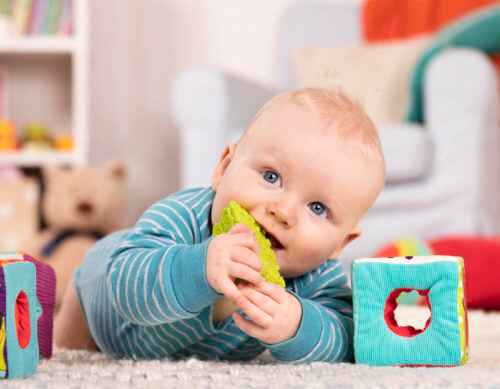
Health Risks Associated with Dirty Toys
When toys get dirty, they can hold onto all sorts of germs like bacteria, viruses, and mold, which can lead to infections, allergies, and breathing problems. Regular cleaning helps prevent these health hazards and ensures a safe environment for your baby to play.
How Often Should You Clean Baby Toys?
The frequency depends on the toy and how it’s used. Here’s a general guideline:
Daily: Wipe down frequently used teething toys and any toys that end up in your little one’s mouth. You can use baby wipes or a damp washcloth with a mild soap solution.
Weekly: Wash all hard plastic toys, bath toys, and soft toys that can be machine-washed.
Monthly: Deep clean wooden toys and any electronic toys that can be wiped down.
Of course, use your judgment! If a toy gets visibly dirty or ends up in a questionable place (like the dog’s water bowl!), clean it right away.
Safe and Eco-Friendly Cleaning Solutions
Harsh chemicals have no place in your baby’s world. Here are some safe cleaning options:
Warm Soapy Water: A classic for a reason! Mix a few drops of gentle dish soap in warm water. This is perfect for most hard plastic toys and wooden toys.
Vinegar Solution: White vinegar is a natural disinfectant. Mix one part vinegar with four parts water in a spray bottle. This is great for wiping down electronic toys and highchairs.
Baking Soda Paste: Make a paste with baking soda and water. This is a gentle scrub for removing stuck-on messes from plastic toys.
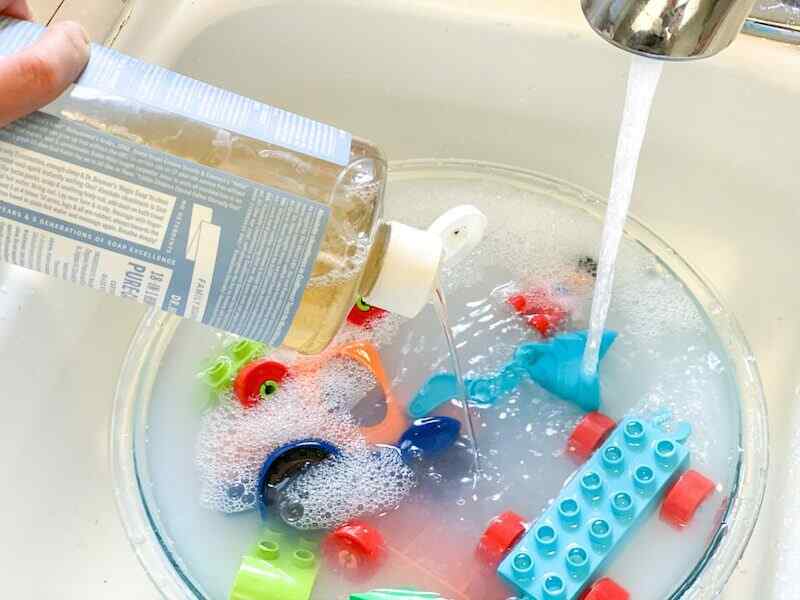
Essential Tools for Cleaning Champions
You don’t need fancy tools to keep toys tidy. Here are some handy tools to have on hand:
- Dishwashing Brush: Great for scrubbing nooks and crannies on hard plastic toys.
- Soft-Bristled Toothbrush: Perfect for getting into tight spaces on soft toys.
- Washcloths and Sponges: Essential for wiping down surfaces.
- Spray Bottle: Use this for vinegar solutions or disinfecting sprays (always check labels for baby-safe options!).
- Mesh Laundry Bag: Protects soft toys in the washing machine.
How to Clean Baby Toys: General Cleaning Guidelines
Before diving in, here are some things to keep in mind:
- Always check the toy’s cleaning instructions: Some toys may have specific care needs.
- Start with the gentlest method: Work your way up to stronger cleaning solutions if needed.
- Air dry whenever possible: Harsh heat can damage some toys.
- Rinse thoroughly: Remove all soap residue to prevent irritation.
Keep in mind: Bath toys with holes can cause issues. When water gets stuck inside, mold can grow. Even mesh toy caddies might not let enough air in to dry the toys fully. It’s best to skip hollow toys with holes, like rubber duckies, in the bath. But if you use them, make sure to shake or squeeze out water and let them air dry completely. If you notice mold inside a toy or it comes out when you shake it, throw the toy away right away.
Cleaning by Toy Type
Now, let’s get down to business! Here’s how to tackle different types of toys:
Soft Toys: Check the care label. If machine-washable, toss them in a mesh laundry bag on a gentle cycle with cold water. Otherwise, hand-wash with warm soapy water, rinse thoroughly, and air dry completely.
Plush toys: They can usually go in the washing machine and dryer, making it simple to wash them once a week (especially if kids sleep with them), every other week, or whenever they get dirty. For plush toys that can’t be washed, just give them a quick spot clean when they need it.
Plastic Toys: Fill a sink or tub with warm soapy water. Wash the toys with a washcloth or dishwashing brush, paying attention to crevices. Rinse thoroughly and air dry.
Wooden Toys: Spot clean with a damp washcloth and mild soap solution. Wipe dry with a clean cloth. Avoid soaking wooden toys, as this can warp them. You can disinfect wooden toys with a diluted vinegar solution (one part vinegar to four parts water).
Electronic Toys: Turn off the toy and remove batteries (if applicable). Wipe down surfaces with a damp cloth or a vinegar solution. Never submerge electronic toys in water!
How to Disinfect Toys
Sometimes, a simple cleaning isn’t enough. If your little one is sick, or if a toy has been exposed to a lot of germs (like after a playdate), you might want to disinfect it. Here’s how:
Alcohol Solution: Mix equal parts rubbing alcohol and water in a spray bottle. Spray the toy liberally and let it air dry completely. Important Note: Never use this solution on soft toys or wooden toys, as it can damage them.
Bleach Solution: For extreme situations (like a diaper blowout!), a diluted bleach solution can be used. Mix one teaspoon of bleach with one gallon of cool water. Submerge the toy for 5 minutes, then rinse thoroughly with clean water and air dry completely. Warning: Only use bleach as a last resort, and never mix it with other cleaning products!
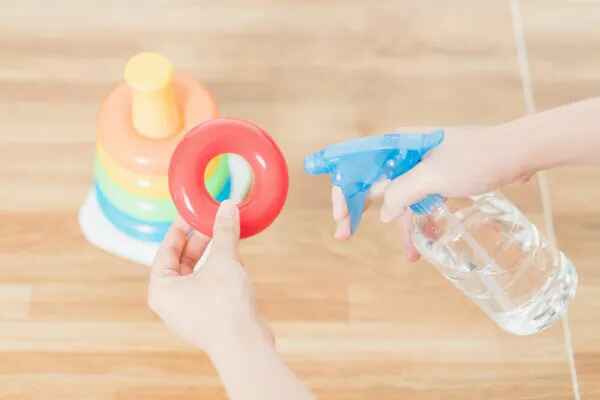
Special Considerations for Teething Toys
Teething toys get a lot of use! Here’s how to make sure they stay clean and safe for your baby to chew on:
Freeze them: This numbs gums and provides soothing relief. Just make sure the toy is designed for freezing.
Boil them: If the toy is made of silicone or hard plastic, boiling it for a few minutes can disinfect it. Let it cool completely before giving it back to your baby.
Disinfecting Toys During Illness
If your little one is sick, it’s important to disinfect their toys more frequently. Wash or disinfect all toys that have been in their mouth recently. You can also wipe down surfaces in their play area with a disinfectant wipe.
Storing Clean Toys Properly
After cleaning your toys, store them properly to keep them clean so that they should not get re-contaminated. Here are some tips:
- Use bins with lids: This keeps dust and dirt at bay.
- Rotate toys: This helps prevent the build-up of germs on any one toy.
- Wash storage containers regularly: Don’t forget to clean the toy bins themselves!
Tips for Maintaining Cleanliness
Wash your hands frequently: This is the best way to prevent germs from spreading to toys in the first place.
Encourage handwashing before and after playtime: Teach your little one the importance of clean hands with catchy songs or fun games.
Wipe down toys after outdoor play: A quick wipe with a damp cloth can remove dirt and debris before it gets tracked inside.
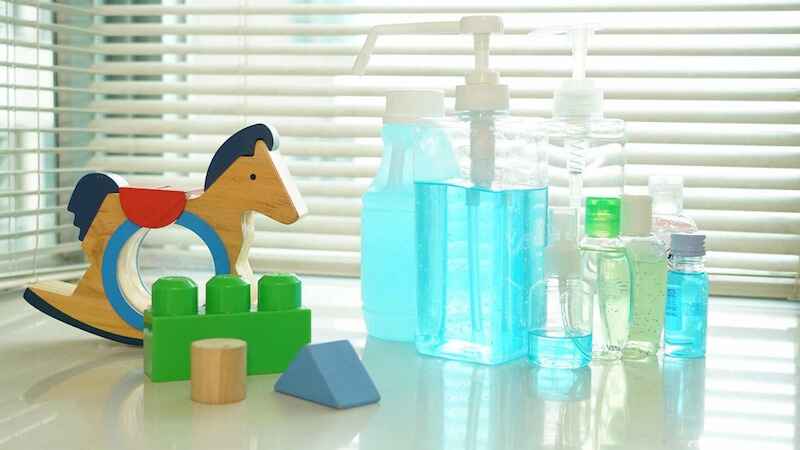
Wrapping Up
So, to wrap it up, it’s super important to keep your baby’s toys clean for their health and safety. By knowing why how to clean baby toys and cleanliness matters and using safe, eco-friendly cleaning methods, we can keep our kiddos safe from germs and yucky stuff while they play. With the right stuff and tricks, it’s easy to keep those toys nice and clean for lots of fun playtime. So, use these tips and make sure your baby’s toys stay clean, safe, and good for the planet. Let’s keep on cleaning, mamas!
Source:
How to Clean Baby Toys : https://www.whattoexpect.com/baby-products/trends/how-to-clean-baby-toys
How to Clean Baby Toys: https://www.verywellfamily.com/how-to-clean-baby-toys-5214136

Hi, I’m Lindley! I’m a stay-at-home-mom sharing all of the tips and tricks I learn throughout my motherhood journey. I’m now navigating through wife life and being a mom while blogging my crazy adventures. I’m so glad to have you along for the ride!
